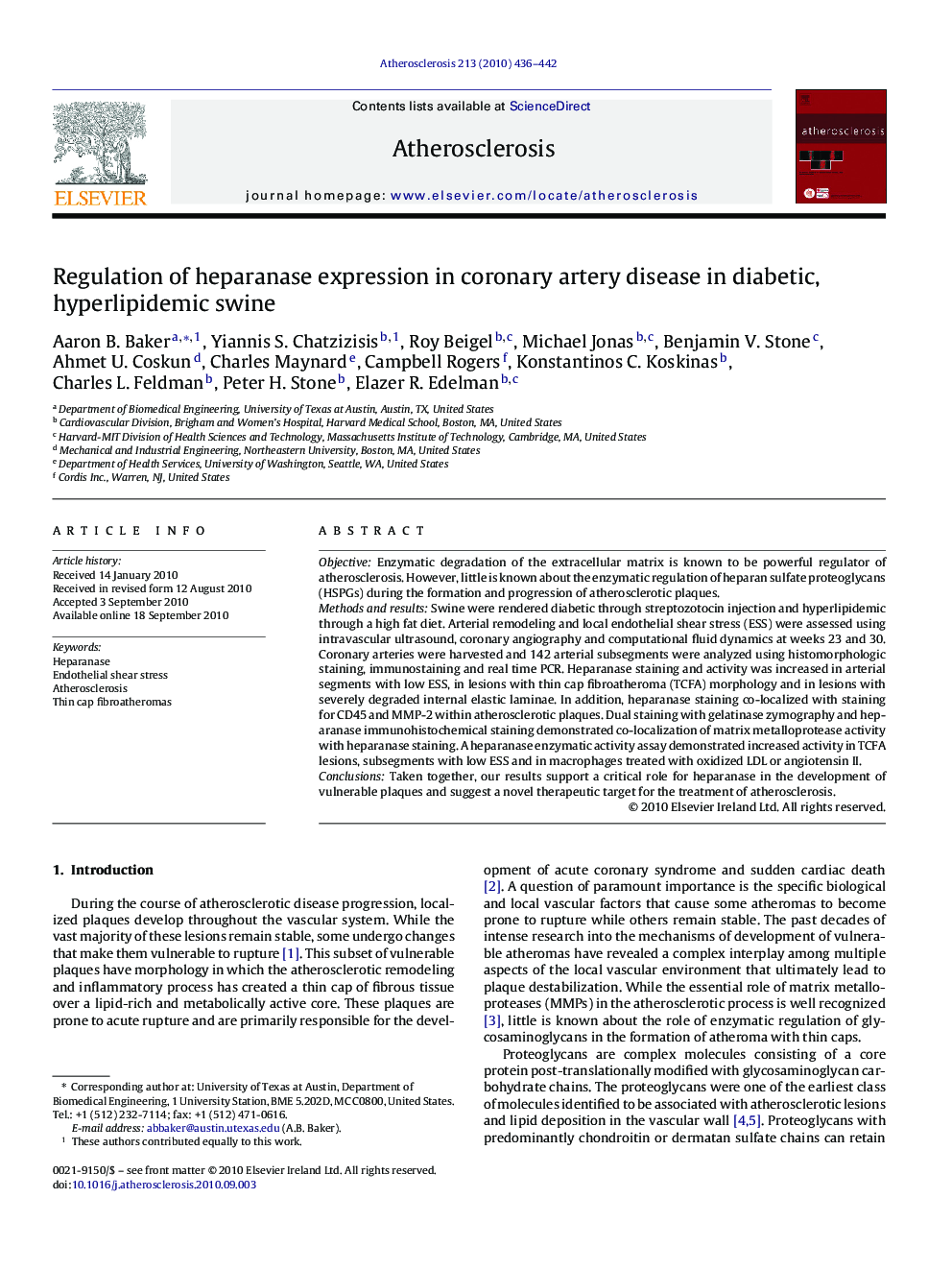| Article ID | Journal | Published Year | Pages | File Type |
|---|---|---|---|---|
| 2892938 | Atherosclerosis | 2010 | 7 Pages |
ObjectiveEnzymatic degradation of the extracellular matrix is known to be powerful regulator of atherosclerosis. However, little is known about the enzymatic regulation of heparan sulfate proteoglycans (HSPGs) during the formation and progression of atherosclerotic plaques.Methods and resultsSwine were rendered diabetic through streptozotocin injection and hyperlipidemic through a high fat diet. Arterial remodeling and local endothelial shear stress (ESS) were assessed using intravascular ultrasound, coronary angiography and computational fluid dynamics at weeks 23 and 30. Coronary arteries were harvested and 142 arterial subsegments were analyzed using histomorphologic staining, immunostaining and real time PCR. Heparanase staining and activity was increased in arterial segments with low ESS, in lesions with thin cap fibroatheroma (TCFA) morphology and in lesions with severely degraded internal elastic laminae. In addition, heparanase staining co-localized with staining for CD45 and MMP-2 within atherosclerotic plaques. Dual staining with gelatinase zymography and heparanase immunohistochemical staining demonstrated co-localization of matrix metalloprotease activity with heparanase staining. A heparanase enzymatic activity assay demonstrated increased activity in TCFA lesions, subsegments with low ESS and in macrophages treated with oxidized LDL or angiotensin II.ConclusionsTaken together, our results support a critical role for heparanase in the development of vulnerable plaques and suggest a novel therapeutic target for the treatment of atherosclerosis.
